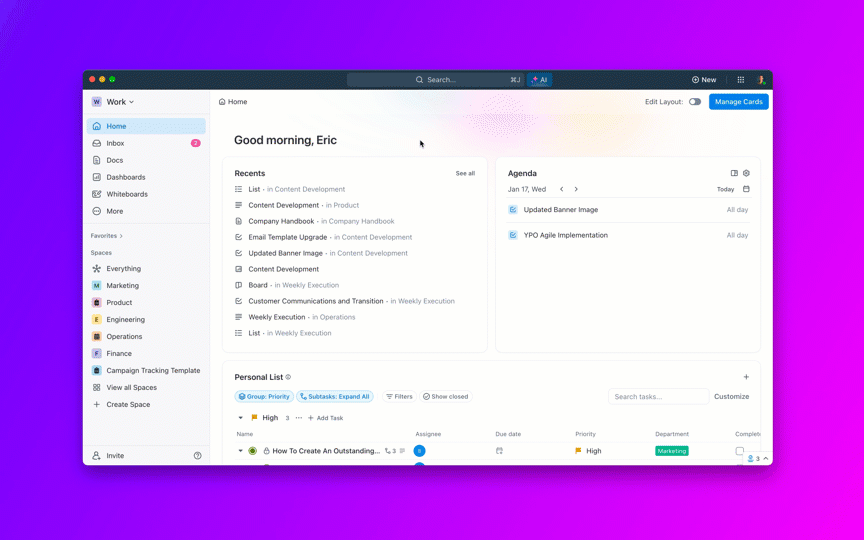Top 10 React Alternatives for Frontend Developers in 2025

Sorry, there were no results found for “”
Sorry, there were no results found for “”
Sorry, there were no results found for “”

You no longer need to code everything from scratch to create fantastic user interfaces. Instead, you can use an open-source Javascript library like React to pick and choose the components you want and then put them all together.
React is an open-source Javascript library designed for building user interfaces. While it’s not a framework, it can help develop web apps—it’s like building a UI out of building blocks. React provides the blocks, enables you to put all of them together, and keeps them organized. You can also use React Native to build mobile apps.
React and React Native have been the standard for building user interfaces. Still, they’re not the only ones out there—React alternatives provide different frameworks, tools, and functions that may appeal to some developers.
Learn more about what you should look for in React alternatives and ten of the best options to try this year.
When reviewing alternatives to React, you’ll need to consider a few things:

Lit is a lightweight alternative to React for building web components. Unlike React, it doesn’t provide a complete framework but provides tools for building great UI.
Lit offers alternatives to React components that are modular and easily maintainable, with efficient DOM manipulation. It has a lighter framework and a lower learning curve than React.

Inferno is a lightweight Javascript library similar to React. It offers built-in server-side rendering (SSR) with significant load performance benefits. Inferno’s focus on performance means it renders faster than React, especially on dynamic web interfaces with many components.

Svelte is a progressive JavaScript framework for building web apps. One of the key features of this lightweight framework is that it compiles your code at build time, which results in smaller bundles for faster performance.
It also eliminates the need for manual DOM manipulation because it automatically triggers updates to the UI based on your data. Like React JS, Svelte encourages component-based architecture, making your code more organized and maintainable.

Htmx is a Javascript library used for building interactive web applications. Instead of using complex build tools and frameworks, Htmx adds functionality directly to your HTML, keeping performance and loading times quick. It’s ideal for single-page applications or other small projects.

Elm is a functional programming language to build reliable and easily maintainable web apps. One of Elm’s core features is catching errors during compile time, preventing many runtime issues. Elm uses functional programming concepts for cleaner, easily reasoned code.

Retool is a platform for building internal tools for businesses. Developers can design web applications that connect to databases to create custom dashboards, data management tools, and workflows. Quickly build a web application using the platform’s drag-and-drop interface, then add access control and data encryption for security and compliance needs.
Check out these Retool alternatives!

Marko is a template engine for Javascript designed for server-side rendering. It’s a great React alternative if you want something that focuses entirely on templating. Marko also uses a virtual DOM technique for faster loading of web pages and offers efficient data binding for simpler development.

Vanilla JS allows you to use Javascript without an external library or framework. It gives you complete control over your UI, and because of the minimal javascript, it’s one of the fastest and lightest options. However, using Vanilla JS means you don’t get the benefits of a React library, so you’ll need to build your JS framework from scratch.

Hyperapp is a minimal Javascript library for building simple, easily maintained user interfaces. It doesn’t have an opinionated structure so that you can retain control and flexibility in your project. The easy-to-use system is ideal for new developers who want to learn how to create progressive web apps.

Aurelia is a modular Javascript framework for creating modern and dynamic web interfaces. The framework focuses on creating a flexible developer experience, allowing you to choose the necessary components so bundle sizes stay small and maintainable.
A good React alternative is just one component of your developer toolkit. Beyond a Javascript framework or library, you’ll need to include tools that help your team work collaboratively and efficiently. For that, there’s ClickUp.
ClickUp is a powerful project management platform perfect for developers and software teams. You can create custom views, tasks, and workflows that match your team’s development process. It has incredible collaborative tools, so you can team up no matter where or when you are working.
ClickUp also integrates with your current tech stack, working with platforms like GitHub, GitLab, and Slack, so you have more of your favorite tools in a central platform.
You’ll love ClickUp’s AI tools too! Put the AI to work drafting software development plans, actioning meeting notes, or summarizing complex articles for you. It’s like having an assistant working diligently by your side so you can focus on development.
Whether you’re building small React applications or complex mobile apps, ClickUp helps keep you on track by streamlining your workflows and creating a collaborative workspace for your team.
See how ClickUp is helping software teams work smarter. Sign up for your free ClickUp account today and explore our templates and resources made with development teams in mind.
© 2025 ClickUp